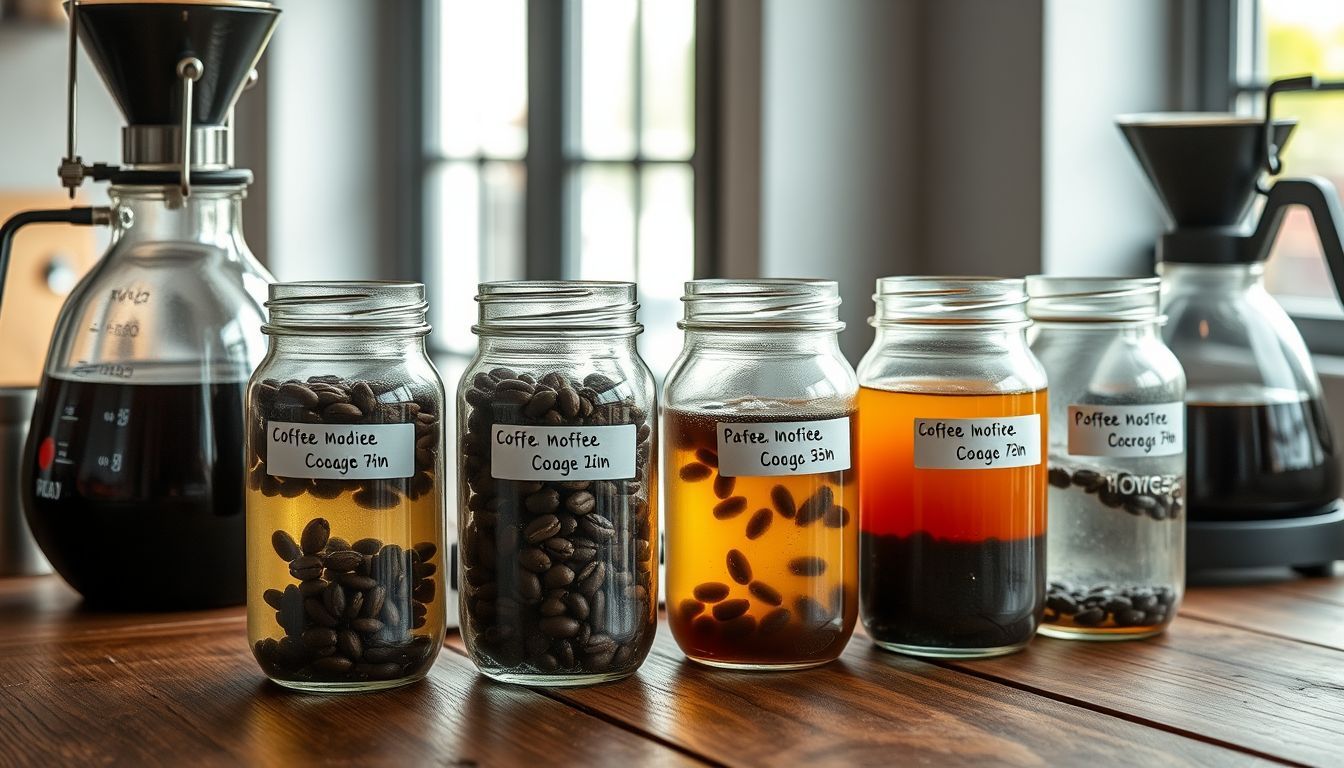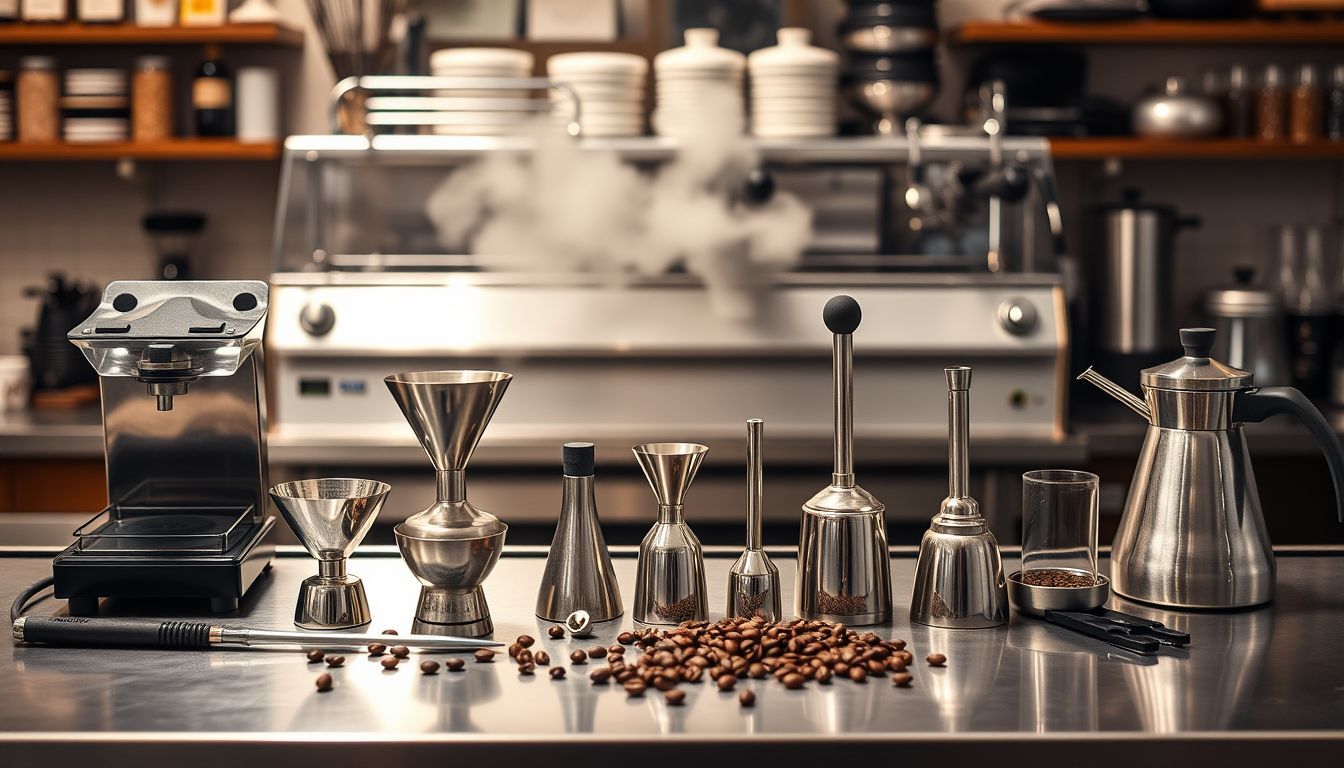The Intersection of Coffee and Fermentation: Exploring Novel Flavor Techniques for Home Brewers
Discover how fermentation influences coffee flavors and learn innovative techniques to enhance your home brewing experience with unique taste profiles.

The Intersection of Coffee and Fermentation: Exploring Novel Flavor Techniques for Home Brewers
Introduction
Ah, coffee—the elixir of life that transforms groggy mornings into productive days. But have you ever pondered the journey your coffee beans embark upon before they meet your grinder? Beyond the sun-drenched fields and meticulous roasting lies a pivotal process: fermentation. This microbial magic not only preserves the beans but also crafts the intricate flavors we cherish. Let's delve into the world of coffee fermentation and uncover how you, the intrepid home brewer, can harness its potential to elevate your cup.
The Science Behind Coffee Fermentation
Fermentation in coffee is akin to a backstage pass to flavor development. Post-harvest, coffee cherries undergo fermentation to remove the mucilage—the sticky layer enveloping the beans. This process isn't just about cleanliness; it's a flavor alchemy where microorganisms like yeasts and bacteria break down sugars, producing acids and aromatic compounds that define the coffee's profile.
Key Players in Fermentation:
- Yeasts: These fungi feast on sugars, yielding alcohols and esters that introduce fruity and floral notes.
- Lactic Acid Bacteria: They generate lactic acid, enhancing the coffee's acidity and imparting creamy undertones.
- Acetic Acid Bacteria: These microbes produce acetic acid, adding complexity and a subtle sharpness to the flavor.
The interplay of these microorganisms, influenced by factors like temperature, humidity, and fermentation duration, crafts the unique taste of each batch.
Traditional Fermentation Methods and Their Flavor Profiles
1. Natural (Dry) Fermentation:
In this method, whole cherries are sun-dried, allowing fermentation to occur within the fruit. The result? Coffees with bold, fruity flavors and a heavier body, often reminiscent of berries or tropical fruits.
2. Washed (Wet) Fermentation:
Here, cherries are depulped, and the beans ferment in water tanks. This technique yields cleaner, brighter cups with pronounced acidity and nuanced flavors.
3. Honey (Semi-Washed) Fermentation:
A hybrid approach where some mucilage remains during drying. Depending on the amount left, the coffee can range from light and sweet to rich and syrupy.
Innovative Fermentation Techniques for Home Brewers
While traditional methods are typically the domain of producers, home brewers can experiment with fermentation to craft unique flavors. Here's how:
1. Controlled Fermentation:
- What: Soak green beans in a controlled environment, allowing specific microorganisms to act.
- How: Place beans in a sealed container with a sugar solution, maintaining a consistent temperature.
- Why: This can introduce new flavor dimensions, from enhanced sweetness to exotic fruit notes.
2. Co-Fermentation:
- What: Ferment beans alongside other ingredients like fruits or spices.
- How: Add elements like orange peels or cinnamon sticks to the fermentation vessel.
- Why: This imparts complementary flavors, creating a bespoke coffee experience.
3. Anaerobic Fermentation:
- What: Ferment beans in an oxygen-free environment.
- How: Use airtight containers and introduce carbon dioxide to displace oxygen.
- Why: This method can amplify fruity and wine-like characteristics.
Safety Note: Always ensure cleanliness and monitor the process to prevent unwanted microbial growth.
Practical Steps for Home Fermentation
1. Source Quality Green Beans:
- Opt for fresh, high-quality beans from reputable suppliers.
2. Prepare the Fermentation Medium:
- Create a sugar solution or select co-fermentation ingredients.
3. Set Up the Fermentation Environment:
- Use clean, airtight containers.
- Maintain a stable temperature (ideally between 18-22°C or 64-72°F).
4. Monitor the Process:
- Check daily for signs of fermentation, such as bubbling or aroma changes.
- Fermentation can last from 12 to 72 hours, depending on desired flavor intensity.
5. Dry the Beans:
- After fermentation, rinse beans thoroughly.
- Dry them evenly until they reach a moisture content of about 10-12%.
6. Roast and Brew:
- Roast the beans to your preferred level.
- Brew and savor the unique flavors you've cultivated.
Conclusion
Fermentation is the unsung hero in the symphony of coffee flavors. By understanding and experimenting with this process, home brewers can unlock a treasure trove of taste possibilities. So, don your lab coat (or apron), embrace your inner scientist, and embark on a flavorful journey that transcends the ordinary cup. After all, the best part of brewing coffee at home is making it uniquely yours.
Note: Always prioritize safety and hygiene when experimenting with fermentation. If unsure, consult with experts or refer to detailed guides.

Sofia Rossi
I started my career in a world of spreadsheets and boardrooms, but I quickly realized the most interesting data was in the way people interacted when the pressure was on. My novels are my way of analyzing the human heart—the messy, complicated, and often hilarious parts. I write about the lives we lead now, with all the love, ambition, and absurdity that comes with it.


